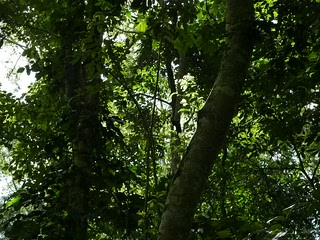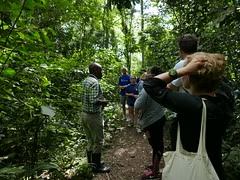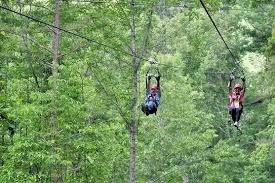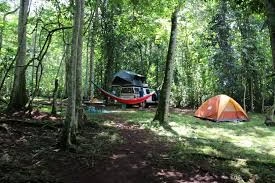Mabira Forest.
 Mabira Forest, with its diverse ecosystem, exciting activities, and serene beauty, is a must-visit destination in Uganda. Among it’s most captivating treasures is an ancient tropical rainforest located just a short drive from the bustling city of Kampala.
Mabira Forest, with its diverse ecosystem, exciting activities, and serene beauty, is a must-visit destination in Uganda. Among it’s most captivating treasures is an ancient tropical rainforest located just a short drive from the bustling city of Kampala.
A visit to Mabira Forest offers an immersive experience filled with scenic beauty, unique attractions and outdoor activities that promise adventure, relaxation, and a deep connection with nature.
Location and accessibility of Mabira Forest.
Mabira Forest lies about 54 kilometers east of Kampala along the Kampala-Jinja Highway, and it covers 306-square-kilometer stretching across parts of Mukono, Buikwe and Jinja districts.
Its location along this main highway makes it easily accessible by car or local transportation from either Kampala or Jinja.
The drive to Mabira Forest takes around an hour from Kampala, making it an ideal escape from urban life for day trips or weekend getaways.
The Scenic Beauty of Mabira Forest.
As one of Uganda’s largest rainforests, Mabira Forest is a lush paradise of dense vegetation with towering trees and diverse plant life.
The forest canopy rises to impressive heights thereby providing shade for the myriad of plants that thrive in the understory.
With its towering mahogany, fig and musizi trees, some of which are over 200 years old, Mabira creates a striking visual contrast of green tones under the dappled sunlight.
Lush vines and epiphytes drape over branches, creating a misty, enchanted atmosphere that invites visitors to explore deeper.
For photographers, nature lovers, and anyone seeking a break from daily life, Mabira offers a breathtaking escape into the heart of nature.
Attractions in Mabira Forest.
Wildlife and bird watching.
Mabira is home to over 300 bird species, making it a paradise for birdwatchers. Among the rare birds is the Nahan’s Francolin species found in a few other places worldwide.
Bird enthusiasts can also spot the Great Blue Turaco, the African Grey Parrot, and the Forest Wood hoopoe. The forest hosts mammals like the red-tailed monkey, gray-cheeked mangabey, bush pigs, duikers, and squirrels.
Mabira is also home to rare butterfly species, making it a beautiful destination for observing unique fauna.
Flora.
Mabira Forest’s vegetation is diverse and enchanting, with over 200 species of trees.
Nature lovers will appreciate the towering trees, shrubs, medicinal plants, and flowers that flourish here.
Experienced guides can introduce you to the unique medicinal uses and cultural significance of many plants.
Cultural Sites.
Mabira Forest holds historical and cultural significance for local communities, especially the Baganda people. Learn about the role of the forest in the daily lives of the people and understand the conservation efforts that protect this precious ecosystem.
The Griffin Falls.
Griffin Falls is one of the main attractions within Mabira Forest, drawing both local and international tourists, offering them a picturesque spot with cascading waters, lush surroundings, and preferably for relaxation after a day of hiking or zip-lining.
Activities to Do in Mabira Forest.
Nature Walks and Guided Hikes.
With over 68 kilometers of trails, Mabira offers both easy and challenging paths. Guided nature walks are ideal for those who want to learn about the ecosystem, wildlife, and cultural stories from knowledgeable local guides.
The trails take visitors through different sections of the forest, showcasing its diverse beauty and offering the opportunity to encounter wildlife.
Bird Watching.
For bird enthusiasts, Mabira is one of the best spots in Uganda.
With the use of binoculars, visitors can join bird-watching tours led by experienced guides who help identify the unique bird species and explain their roles in the ecosystem.
Morning and evening walks provide the best bird-watching opportunities.
Zip-lining.
For those craving adventure, Mabira Forest offers a thrilling zip-lining experience across the treetops. Set up by the Griffin Falls Camp, the zip-line stretches over the forest canopy, offering spectacular views and an adrenaline rush.
Zip-liners soar across the Musamya River, catching glimpses of the beautiful scenery below.
The zip-line course is organized in stages, allowing for breaks to enjoy the panoramic views before continuing the adventure.
Mountain Biking.
Some trails within Mabira Forest are perfect for mountain biking, offering visitors a chance to explore the forest on wheels.
The activity is available for all levels from beginners to experienced bikers, with routes varying in difficulty.
Camping.
An excellent spot for camping, where the forest’s designated campsites allow travelers to enjoy a night under the stars while surrounded by the peaceful sounds of nature.
Camping in Mabira offers a rare opportunity to experience the forest’s magic at night, with sounds of nocturnal animals and the sight of fireflies illuminating the dark.
When to Visit Mabira Forest.
Mabira Forest can be visited year-round, but the best time to explore is during Uganda’s two dry seasons, which are December to February and June to August.
These months provide ideal weather for outdoor activities, with lower chances of rain and easier hiking conditions.
Where to Stay Near Mabira Forest.
Several accommodations cater to visitors wanting to stay close to Mabira Forest.
Options range from eco-lodges and budget-friendly campsites to upscale hotels in nearby Jinja or Kampala.
Eco-lodges like Rainforest Lodge in Mabira offer a unique opportunity to stay within the forest, providing an immersive nature experience with comfortable amenities.
Sustainable tourism and conservation efforts.
Mabira Forest is protected reserve, and there are strict rules to ensure its conservation.
Visitors visiting the forest are encouraged to follow guidelines that minimize impact, such as sticking to marked trails, avoiding littering, and respecting wildlife, to ensure the forests conservation.
Conservation organizations and local communities actively work to protect the forest from threats like deforestation, logging, and habitat loss.




